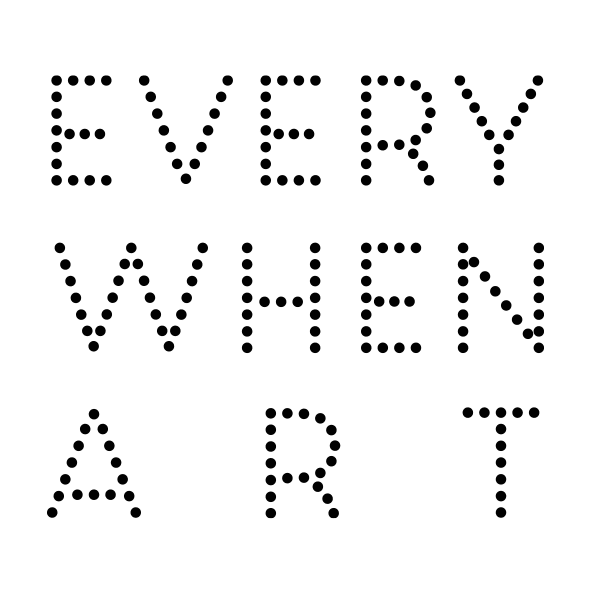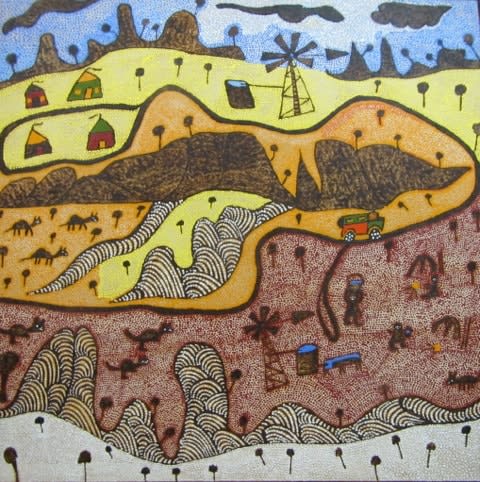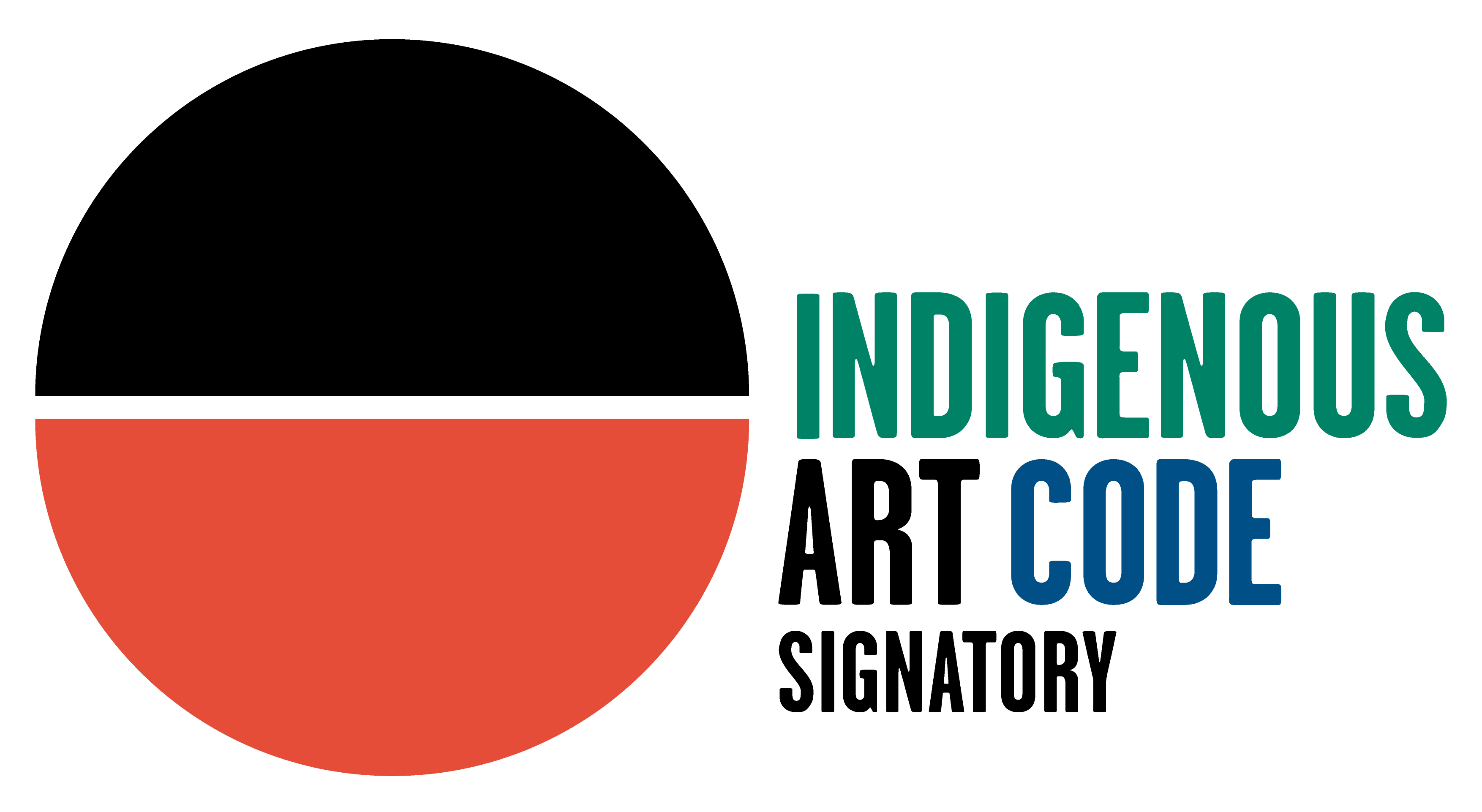-
Artworks
Niningka Munkuri Lewis Pitjantjatjara, 01/01/1945-November 2020
Ara Iritjita (Life in the olden days), 2016acrylic paint on structural plywood231.1 x 231.1 cm
91 x 91 inMM1845Niningka Lewis was born in the 1950s between the mission settlement of Areyonga and Tempe Downs cattle station in the Northern Territory. She grew up in the Ernabella area, making...Niningka Lewis was born in the 1950s between the mission settlement of Areyonga and Tempe Downs cattle station in the Northern Territory. She grew up in the Ernabella area, making regular family trips throughout her traditional lands. After living and working in Kalka for many years and then Mutitjulu in the Uluru-Kata Tjuta National Park, she is now based back in Ernabella. Niningka has a distinctive style and her unusual carvings have been in many exhibitions. She is also a leading artist with Tjanpi, sculpting and weaving native grass artefacts. Walka is Desert design and inextricably linked with Tjukurpa: the Law and way of life of Anangu (Central and Western Desert Aboriginal people). The symbols were traditionally used in cave, ground and body paintings, in story telling, teaching and signalling inheritance. Meaning of the designs depends on its subject and particular people are responsible for their re-creation and teaching according to the Tjukurpa. Highly experienced craftspeople have grown up making traditional tools and weapons under the instruction of their elders. They now apply this knowledge and express their world through art such as this. Both the dot painting and etching techniques, where walka is burnt into the wood with wire heated on a wood fire, have become Centralian traditions, evolving with the adaptation of traditional design for public display and as a depiction of Tjukurpa and landscape.Following the initial contact of the Pitjantjatjara of this area with white Presbyterian ministers, the first community was established around a sheep station at Ernabella in the late 1930s. Coinciding with a severe drought, it drew people to settle there from hundreds of miles to the west where the conditions were extreme. Support was given to Anangu with provisions and employment, and also to retain their language and local culture. In this walka board Niningka is reminiscing about irititja or these early days. Her parents were part of the first generation of people at Ernabella and much of her childhood was spent there during her people's first contact with non-indigenous Australians. People still travelled widely though and often trucks were the best way to transport large groups. In this walka board Niningka shows a truck full of Anangu passing Uluru.
SIGN UP TO OUR MAILING LIST FOR ALL THE NEWS
* denotes required fields
We will process the personal data you have supplied in accordance with our privacy policy (available on request). You can unsubscribe or change your preferences at any time by clicking the link in our emails.



